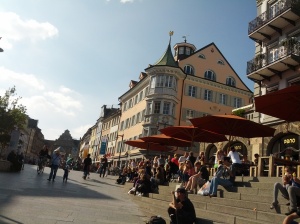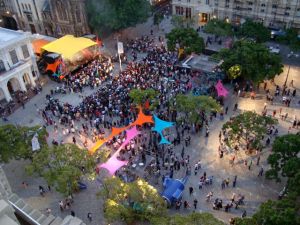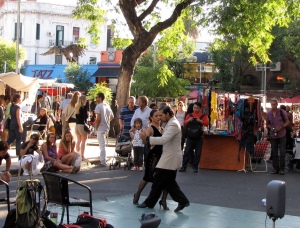This post is quite different from my previous posts; however occasionally I feel it important to explore some of the language commonly used in modern debates around urbanization and urban land policy. Words such as bourgeois, bourgeoisie, burghers, boroughs, gentrification, industrialization. All of these terms are regularly employed in the politics of urbanization; however, it is their etymology that is particularly interesting, as each of these words provides a window into the history of urbanization.
Karl Marx, and the more radical communists who followed him, railed against a class of urban inhabitants who were the financiers and entrepreneurs behind the industrial revolution in Europe, Canada, and the United States. This class or new establishment were known as the “Bourgeois” or the city “Burghers”, and they were critical to transforming Europe and North America from rural to urban societies in the 19th and 20th centuries . (1)
The word bourgeois means “inhabitants inside the city walls” and is from medieval french. (2) In medieval France they were the craftsmen and lenders who lived inside the city and served the royal court. The Bourgeoisie or burghers of 19th and 20th century Europe were neither the aristocracy nor the working and rural classes, they were the holders of land and industrial wealth who also inhabited areas inside the traditional city walls in boroughs, which adjoined the inner centres of the great cities of Europe. (3) Vienna is a classic example of this urban model, where prior to 1918, the aristocracy enjoyed almost exclusive control of the palaces and lands of the inner centre of the city. Outside of this node, in an enormous doughnut, a large bourgeoisie arose, and it was through their wealth that cities like Vienna rapidly grew under the expansive wealth of the bourgeois class. Further beyond the gentrified neighbourhoods of the bourgeois, extended the lesser boroughs, known in French as the “faubourges”, essentially meaning “outside the bourgeois”, or “outside the town walls”. (4) This enormous populace were the factory workers, cleaners, and scrubbers of the industrial age – the proletariat. These huge geographical areas extended outwards into the rural countryside, and had limited contact with the aristocracy and elite bourgeois located in the inner rings of the city. (5)
1918 changed all of this. The calamity of the Great War, which resulted in the end of Hapsburgs and many other aristocracies ushered in a new era, where the aristocracy were replaced by a new and powerful industrial class sprung out of the elite bourgeoisie. Europe underwent a great period of mixing and political instability as the world lurched from one “ism” to another. In Russia the aristocracy lost their heads, and the bourgeois were stripped of their wealth and status to become workers of the state, along with the former proletariat. In Central Europe the Nazi Holocaust slaughtered millions of urban workers through conflict and industrialized ethnic cleansing, in an attempt to create a Greater industrial Germany.
The political instability in Europe both in the 19th and 20th century lead to large numbers of German speaking peoples leaving central Europe to settle in the United States. This was a period of industrialization in German speaking Europe and the rise of German Unification, where in the 1860’s and 70’s Bismarck and the Kaisers of Prussia forced all German peoples outside of the Helvetic Confederacy and the Austro-Hungarian Empire to form a single empire of ethnic Germans. (6) German immigrants to America brought their language and customs, both of which had lasting and significant impacts on all aspects of American society. Including American cuisine, which today is known for the Hamburger, or burger for short, a meaty patty whose origin can be identified to the city of Hamburg, located in modern day Germany. (7)
The name Hamburg is most likely derived from the words town and forest or pastures, essentially a town or group of inhabitants in a forest or fields; however, the etymology of Ham is not entirely clear. What is clear is that burgher has the same origin and meaning as the french word bourgeois – both are expressions of inhabitants of urban centres inside the traditional town walls. Thus the pop culture modern burger served on plates worldwide and most commonly associated with American cuisine is in fact a German word for bourgeois, the very class of people so despised by both Marx and the communists.
Today bourgeois and bourgeoisie are associated with gentrification, a word whose etymology is equally fascinating. Gentrification derives from the word gentry, which is believed to mean of “gentle origins”, or those who have accumulated their wealth through gentlemanly ways free from the sweaty toils of manual labour associated with the proletariat or the rural class. (8)
Bourgeois, burgers, burghers, boroughs, gentrification. This exercise demonstrates the importance of words and their meaning in the daily discourse of politicians, academics, developers, and community leaders. Understanding their origin helps not only comprehend the current urban environment, it also provides a context to the great events and tragedies that shaped the cities of the world.
(1) http://en.wikipedia.org/wiki/Anti-art
(2) http://en.wikipedia.org/wiki/Bourgeoisie
(3) http://en.wikipedia.org/wiki/Borough
(4) http://en.wiktionary.org/wiki/faubourg
(5) http://www.contreligne.eu/2014/06/stefan-zweig-lete-14-le-monde-dhier-souvenirs-dun-europeen/
(6) http://www.bbc.co.uk/history/historic_figures/wilhelm_kaiser_ii.shtml
(7) http://www.merriam-webster.com/dictionary/hamburger
(8) http://en.wikipedia.org/wiki/Gentrification
Notes: I consider Stefan Zweig to be one of the greatest biographers of modern times. For those seeking an insight into Europe from 1892 to 1941, there can be no better biography than “Le Monde d’Hier”
Tags: bismarck, borough, bourgeois, burger, burgher, dadaism, gentrification, stefan zweig, urbanization, vancouver







